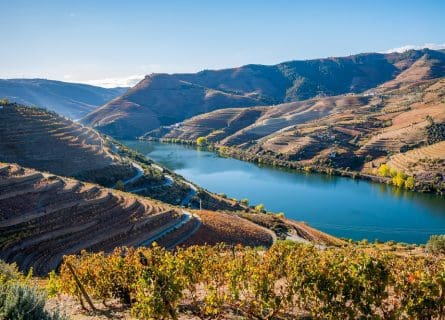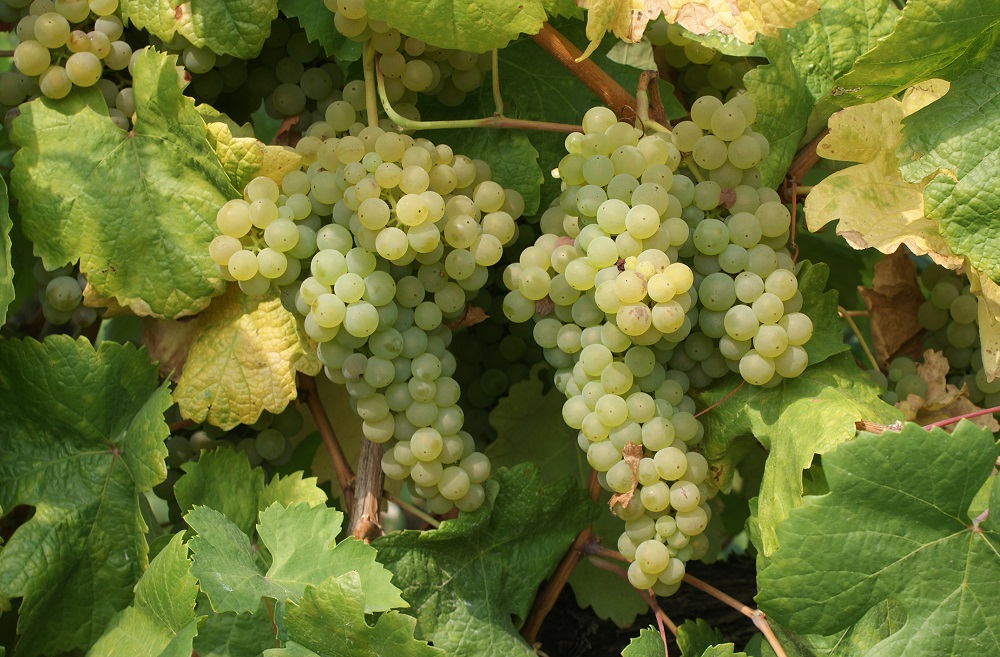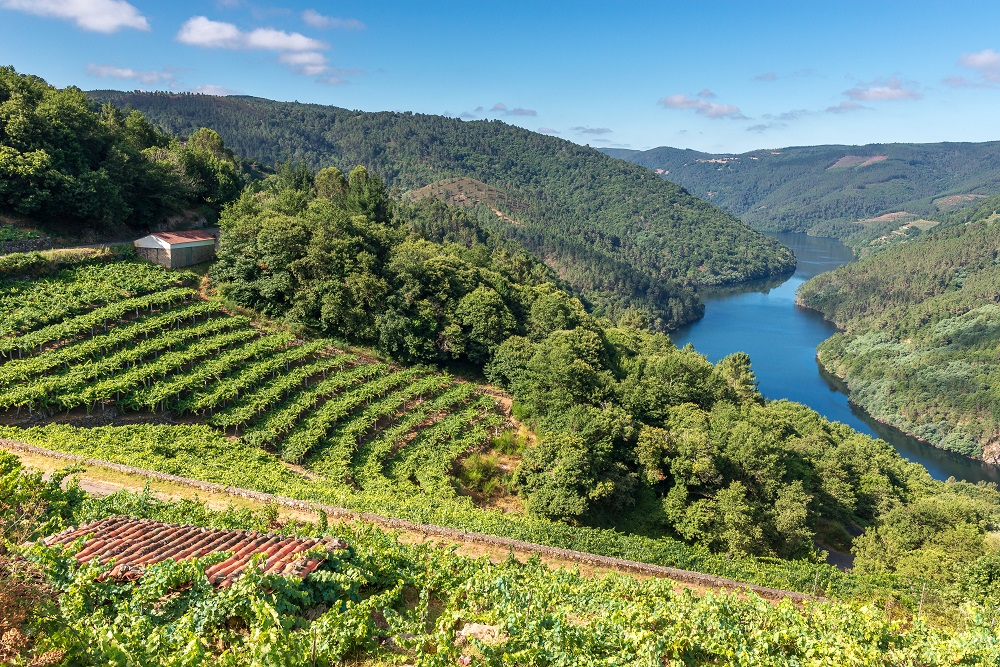
Gouveio Grape Variety: Port’s Surprise
February 20, 2023
Learn about the unique characteristics of Gouveio, a grape variety used in the production of Port wine. Explore its flavor profile and history in our comprehensive guide.
By: James lawrence / Last updated: February 3, 2025
Estimated reading time: 8 minutes
Of all Portugal’s great wine icons, the most underrated remains Vinho Verde. Produced on the hills that flank the Minho River, the province accounts for a seventh of the country’s annual wine harvest. Without it, the Portuguese summer tradition of ‘escaping’ to the mountains and beaches would be missing a vital element – quaffable and refreshing wines that seldom cause hangovers.

Guide to Portuguese White Wine: Read more
Today, a growing volume of white Vinho Verde is based exclusively on the Alvarinho grape, the celebrity of Rias Baixas in Galicia. Yet many exceptional wines are still based on a traditional blend of grape varieties mixed to enhance complexity. The most important of these is undoubtedly the light-skinned Loureiro. Think of it as Riesling’s Portuguese cousin: Loureiro produces very aromatic and crisp white wine, defined by its crunchy acidity and aromas of stone fruit and lime cordial. And, with generally moderate alcohol, it is almost a guilt-free vacation indulgence!
Loureiro is as Portuguese as Bacalao and Pastel de Nata. There are written references to the grape, meticulously documented in archives, that date back to the 1700s. Yet historians suspect it has been cultivated in Portuguese soils since the Romans. Their arrival in the Iberian Peninsula in the 3rd Century BC transformed the lives of the native tribes, imposing the Empire’s culture and customs across the vast landscape of Spain and Portugal. However, the Romans did not begin to conquer the Minho region until 136 BC, founding the settlement of Bracara (modern-day Braga) in 20 BC. Bracara thrived as a center of trade and agriculture – including viticulture.
Then everything started to fall apart. In the 5th century, Germanic tribes from northern Europe began their conquest of the Western Empire, ending centuries of Roman political hegemony. The Suebi, a race from central Europe, captured the Minho region. With Bracara as their capital, the Suebi’s armies established dominion over northern Portugal, Galicia, and Asturias. Their reign over the province of ‘Galeicia’ lasted over 150 years, although numerous skirmishes with the Vandals and Visigoths existed during the 5th century. Finally, in 455, the Visigothic king Theodoric III attacked Bracara, eventually wrestling control of Galeicia in 584. From their capital in Toledo, the Visigoths attempted to subjugate the entire peninsula and build a lasting legacy of peace and prosperity.
Unfortunately, they failed. In 711, the Muslim leader Tariq led his forces into southern Spain. Within a few years, the Moors controlled almost the entire peninsula. It was Western Europe’s first (and last) major Muslim political stronghold, celebrated for its architecture, medicine, and gastronomy advancements. By the 800s, the Andalucian city of Cordoba was Europe’s leading city – a beacon of high culture. However, Moorish influence over the territories of northern Portugal was very short-lived. After a brief sojourn into the city of Braga in the 8th century, the Muslim armies were repelled by Alfonso III of Asturias. After his death, the province fell under the control of his son Ordono of Galicia.
After that, the Christian reconquest of Spain and Portugal gathered real momentum, reaching a climax in 1139. That year, a small kingdom, Portucale, was granted independence by its ruler, Afonso Henriques. With the aid of English crusaders, Henriques vanquished the Moors from Lisbon in 1147. Then, in 1492, Fernando and Isabel retook the last Muslim stronghold after a prolonged siege. The era of Moorish rule was over. A new epoch had begun.
Historians typically refer to this period as a ‘golden age’; the 15th century saw Portuguese sailors explore the African coast and the Atlantic. Indeed, during the reign of Manuel I, Vasco de Gama established a colony on the Indian subcontinent, while Brazil was discovered in 1500. Trade with the East brought incredible wealth and prosperity to the newly created Portuguese state. Yet the agricultural province of Minho did not particularly benefit from this era of discovery, being so far from the capital Lisbon. Nevertheless, Marques de Pombal’s agrarian reforms of the 18th century helped wine regions across Portugal, including the Minho.
Sadly, the 19th century was fraught with conflict and disappointments. French troops invaded the city of Braga in 1809, while Brazil’s loss left a gigantic hole in Portugal’s finances. During Napoleon’s invasion and the Peninsula War, northern Portugal was abandoned to its fate. By the time of Antonio Salazar’s military coup in 1928, local viticulture was in a sorry state.
However, the 21st century has seen a dramatic overhaul of Portuguese vineyards, with major investment flowing into regions like the Douro, Alentejo, and the Minho. A new generation of growers and oenologists is favoring quality over quantity, while vineyard management has changed beyond recognition over the past two decades.
Loureiro has been a net beneficiary of this renaissance. Although it is a high-potential variety, the grape does tend to crop at high yields. In Portugal’s wettest region, this habitually caused the vines to grow massive canopies rather than ripen grapes. However, vines are now mostly trained on trellises designed to maximize ripeness rather than being encouraged to climb up granite posts. Moreover, quality-focused growers now severely curtail the yield by practicing leaf pulling and green harvesting. The results can be tasted in bottle: concentrated and perfumed white wines of real charm and individuality.
Like so many aromatic varieties, Loureiro is prone to oxidation if handled without due care. Therefore, with some notable exceptions, white Vinho Verde is rarely given any oak treatment. The custodians of this venerable wine style are interested in freshness, aromatic finesse, and fruit. Therefore, Vinho Verde is deliberately made light in flavor, relying on its aromatic profile to charm consumers rather than power or complexity. This wine should be enjoyed at a very young age, so winemaking in the Minho generally reflects that. However, one important decision is whether to blend several grape varieties – often Loureiro, Arinto, Trajadura, and Alvarinho – or to produce a single-varietal wine. Both approaches have their respective merits, although the vast majority of Loureiro appears as part of a blend.
Generally, the winemaking will closely reflect the established norms of Galicia, Alsace, and German growers. After the harvest, the grapes are hurried to be processed with as little damage to their skins as possible; the freshness of juice is seen as crucial. The berries are often pressed without crushing (pneumatic machines are now standard), and enormous care is taken to select only free-run juice and light pressings for premium wines.
Although used more sparingly than in the past, sulfur dioxide is still usually added before fermentation begins to prevent spoilage. Low ambient temperatures ( of both the must and cellar) also provide a barrier to oxidation. For that reason, the juice is cold-settled overnight in a tank before fermentation can begin. It may also be filtered or passed through a centrifuge machine to remove impurities. The vinification will inevitably occur in stainless steel at precisely controlled temperatures. The aim is to produce an aromatic and intensely fruity wine – the ultimate summer aperitif.

The best Vinho Verde has an exceptional intensity of fruit flavor and ripe acidity – both derived from the maritime climate of the Minho. Yet, 35 years ago, drinking Vinho Verde was not for the fainthearted. A combination of high yields and poor winemaking produced thin, tart wines of little charm. Indeed, historical examples of this Portuguese institution often had less than 11% alcohol. The weakest examples had to have their searing acidity disguised by adding sugar and spritz (carbon dioxide). But contemporary wines are so very different, a fact that can be partly attributed to global warming. Today, white Vinho Verde competes with the wines of Alentejo and the Douro for the title of Portugal’s most refreshing drop.
Nevertheless, wine growing in this corner of Portugal can be quite challenging. High rainfall (up to 1,600 mm per year) can wreak havoc in bad vintages, causing rot, mildew, and dilution. And so green (Verde) is an apt word for the northern frontier between Portugal and Spain; the region’s verdant landscape is among the prettiest in Europe. However, local soils are highly suited to quality viticulture: sandy terrain over granite and outcrops of schist, surrounded by dense woodland. It is widely agreed that the best sites are found in the subregions of Monção e Melgaço, in addition to the very cool zone of Lima. In the case of the former, vineyards are sheltered from the worst excesses of the Atlantic-influenced weather by a chain of hills.
Lima, meanwhile, benefits from exceptional terroir and moderately warm weather during the summer months. Single-varietal wines are a local specialty of Lima, including 100% Loureiro bottlings. The best are extremely well-made and attractive, with captivating floral perfume. In the 20th century, Vinho Verde was a wine that elicited no real expectations from the consumer. If it was drinkable, that was considered a bonus! Today, however, a great deal is asked of the wine producers of the Minho. Fortunately for us, they continue to deliver the goods: delicious whites that offer palate-tingling freshness. In the heat of a Portuguese summer, nothing else will suffice.
If you would like us to customize an exclusive luxury tour, contact us and let us know your travel plans. We offer luxury food and wine tours for private groups of a minimum two guests. In addition, all of our private, chauffeured tours are available year-round upon request.

